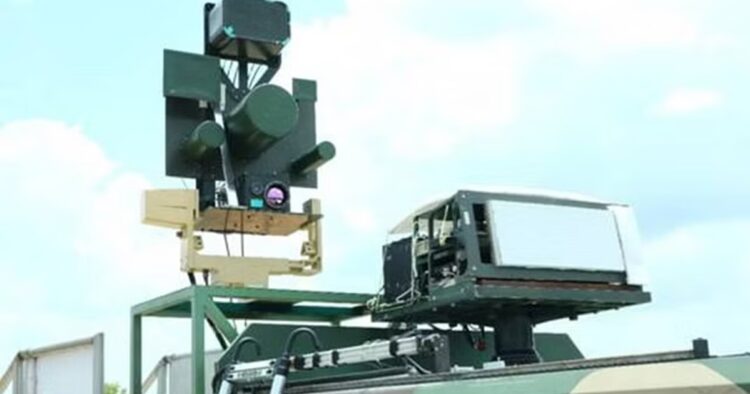In a significant move to bolster its defenses along the northern borders with China, the Indian Army has introduced seven state-of-the-art indigenous Integrated Drone Detection and Interdiction Systems (IDD&IS). These cutting-edge systems, developed jointly by the Defense Research and Development Organization (DRDO) and Bharat Electronics, are equipped to detect and neutralize hostile drones through a combination of jamming and laser-based interception capabilities.
The newly deployed IDD&IS units, known as the Mark-1 variants, represent a critical advancement in Bharat’s aerial defense capabilities. With a detection range spanning 5 to 8 kilometers, these systems are capable of identifying low radar cross-section drones or unmanned aerial vehicles (UAVs) operating in the vicinity. Notably, they offer both “soft kill” options, involving jamming drones within 2 to 5 kilometers, and “hard kill” capabilities, with an interception range extending beyond 800 meters.
An army officer involved in the deployment emphasized the integrated nature of these systems, which enable a comprehensive approach to neutralizing drone threats. These measures are particularly vital given the escalating use of drones and swarm drones in recent conflicts worldwide, highlighting the urgent need for robust counter-drone capabilities.
Bharat’s armed forces have recognized the imperative to enhance their defense against aerial threats, evidenced by their procurement plans for a variety of UAVs and counter-drone systems. The Indian Air Force (IAF), for instance, has initiated procurements for anti-swarm drone systems and counter unmanned aircraft systems (C-UAS) to safeguard its assets and air bases from potential attacks.
Despite strides in developing indigenous drone and counter-drone technologies, Bharat acknowledges a need to catch up with global advancements in this domain. To address this gap, DRDO has been actively pursuing the development of more powerful Directed Energy Weapon (DEW) systems, including high-energy lasers and high-powered microwaves.
According to sources familiar with DRDO’s plans, the organization aims to significantly enhance the power levels of its DEWs over the next few years. By focusing on short, medium, and long-term goals, DRDO intends to develop DEWs capable of delivering precise and effective responses to aerial threats, with operational ranges extending several kilometers.
The ongoing military standoff with China in eastern Ladakh underscores the urgency of India’s efforts to bolster its defense capabilities, including the development and deployment of advanced drone detection and interception systems. As the strategic landscape evolves, Bharat’s commitment to technological innovation and indigenous defense solutions remains steadfast in safeguarding its national security interests.

















Comments